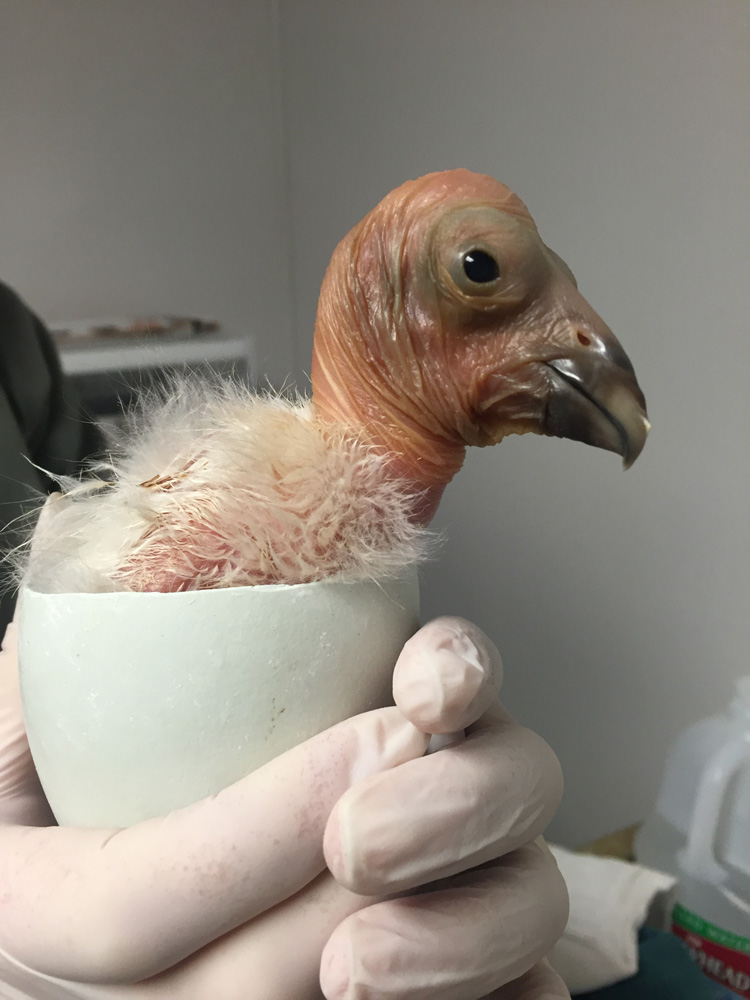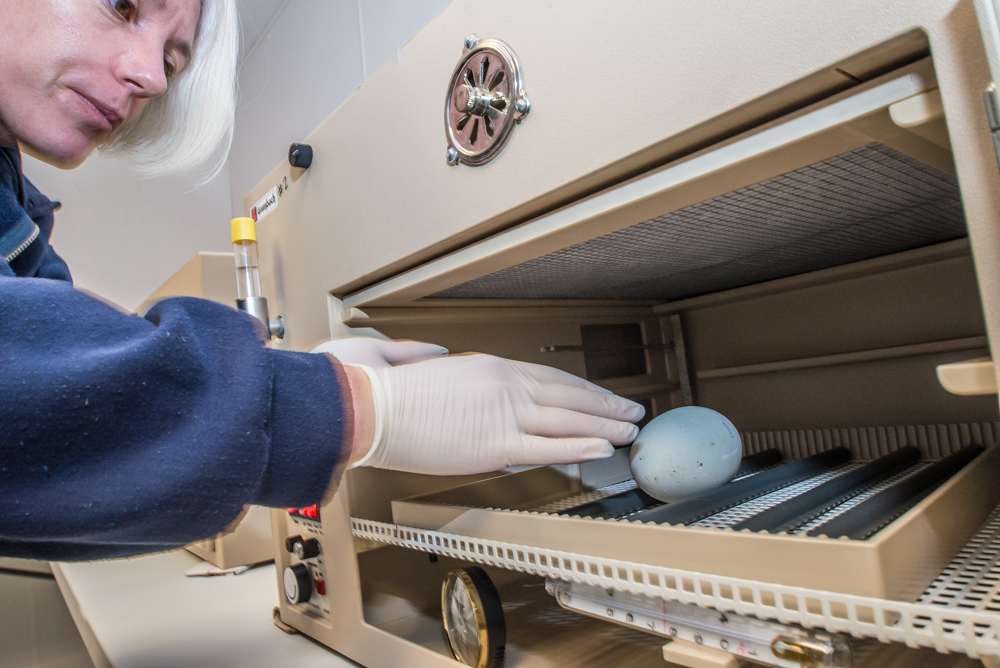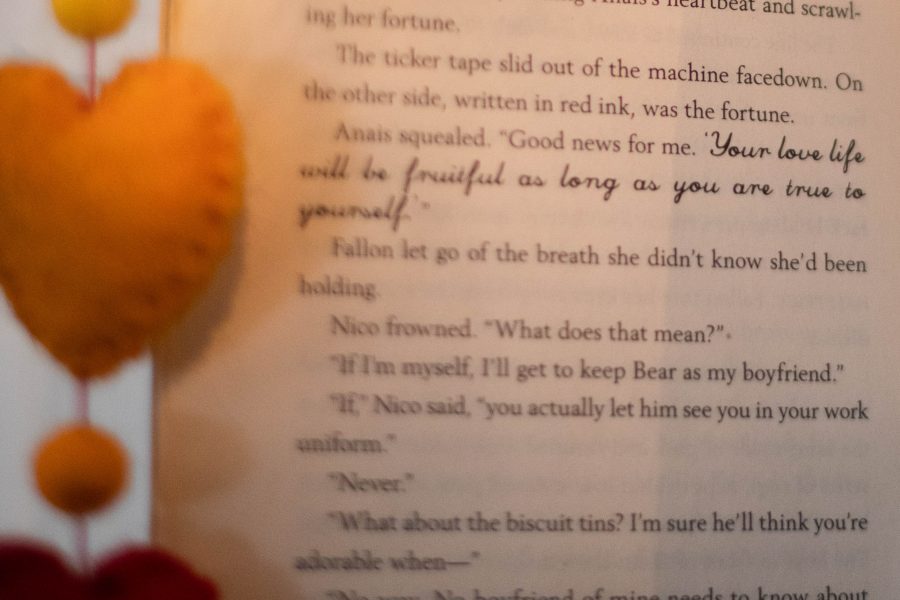Springtime for California Condors means egg season. For a mating pair of the enormous, vulture-like birds, this means picking out a nest site, laying a single, enormous egg and taking turns to incubate it. For Kelli Walker, the head of the Oregon Zoo’s condor breeding program, egg season is a little more complicated.
“Today we had to pull an egg out of the nest room,” Walker said. “We have to wait until the male and female are out of the nest to pull that egg out, so we were literally standing in a frigid cold barn for an hour.”
Waiting for the parents to leave the nest is only the first step—once the enormous birds are distracted by food, Walker must quickly swap out the egg for a decoy using cleverly-placed egg doors built into the walls. Once in Walker’s expert hands, the newly kidnapped egg is spirited away to a top-notch incubation room, where Walker and her colleagues can safely monitor the developing embryo.
After years of practice, the routine is perfected almost to a science, but it begs the question: why so much effort for an egg? The answer, Walker said, boils down to conservation.
California Condors, the species that Walker has spent so much time caring for, are critically endangered. Even with the best efforts of conservationists such as Walker, there are just over four hundred such condors in the wild today. As small as that number may seem, the situation for these birds was once much, much worse.
Rewind back to the spring of 1987, the situation for condors was bleak—the species was all but extinct in the wild, with only 27 captive condors left in the world. The mass dying-off of condors was due almost exclusively to human incursions into nature, with overhunting and lead poisoning decimating native populations.
Faced with the reality of extinction in the wild, conservationists and wildlife biologists hatched a bold plan—they would attempt to breed California Condors in captivity, reintroducing the offspring back into the wild. Three breeding programs cropped up over the next several decades, most in various parts of California. Then, in the early 2000s, a breeding program opened in the Portland area at the Oregon Zoo. It was the fourth of its kind in the world.
Walker said she joined at the beginning of the Oregon Zoo’s program.
“I started in 2004, when we got our first egg,” Walker said. “I’ve been here since then.” Walker—who had prior experience with the Audubon Society and pursued a higher education in conservation science—said that California Condors were unique.
“Condors are not like any other bird species I’ve ever worked with,” Walker said. “They’re more like when I’ve worked with primates.”
Walker described them as akin to chimps with feathers, noting the similarities in their intelligence and their complicated, rigidly enforced social structure.
Condors also stand out for their appearance. The carrion-eating birds resemble vultures, but are much, much larger—a full-grown adult has a wingspan of up to nine feet. The enormous birds also mate for life, producing only one egg every year or sometimes every other year.
Because of their slow-breeding nature, much of condor conservation is just a game of matchmaking. Since every condor alive today is descended from the twenty-seven condors alive in 1987, breeders like Walker must be extremely careful to maintain genetic diversity when setting up condor couples.
“All of our pairs are put together by a geneticist,” Walker said. Since they mate for life, pairs are rarely broken up, except for in rare instances that they fight to the point of becoming a danger to each other.
“They can cause a huge amount of damage in a very short time,” Walker explained of couples fighting. “We have had to break a couple up…we basically divorce them.”
Thankfully, situations like this are exceedingly rare.
Due to the slow-breeding nature of pairs once they’ve been coupled, the work of repopulating condors has been slow, but also largely successful. For Walker, the hardest part of the job comes after her charges have left her care.
“We see them from an embryo and an egg, and watch them grow up for a year and half and then release them into the wild,” Walker said. “A big part of them die of lead poisoning from ammunition…you put all this time and energy and effort into them, and then you get an email [that they’ve died].”
Despite these challenges and the enormous amount of care and effort required, the condor conservation effort at the Oregon Zoo continues on—egg season has come again and Walker, as always, is ready.





